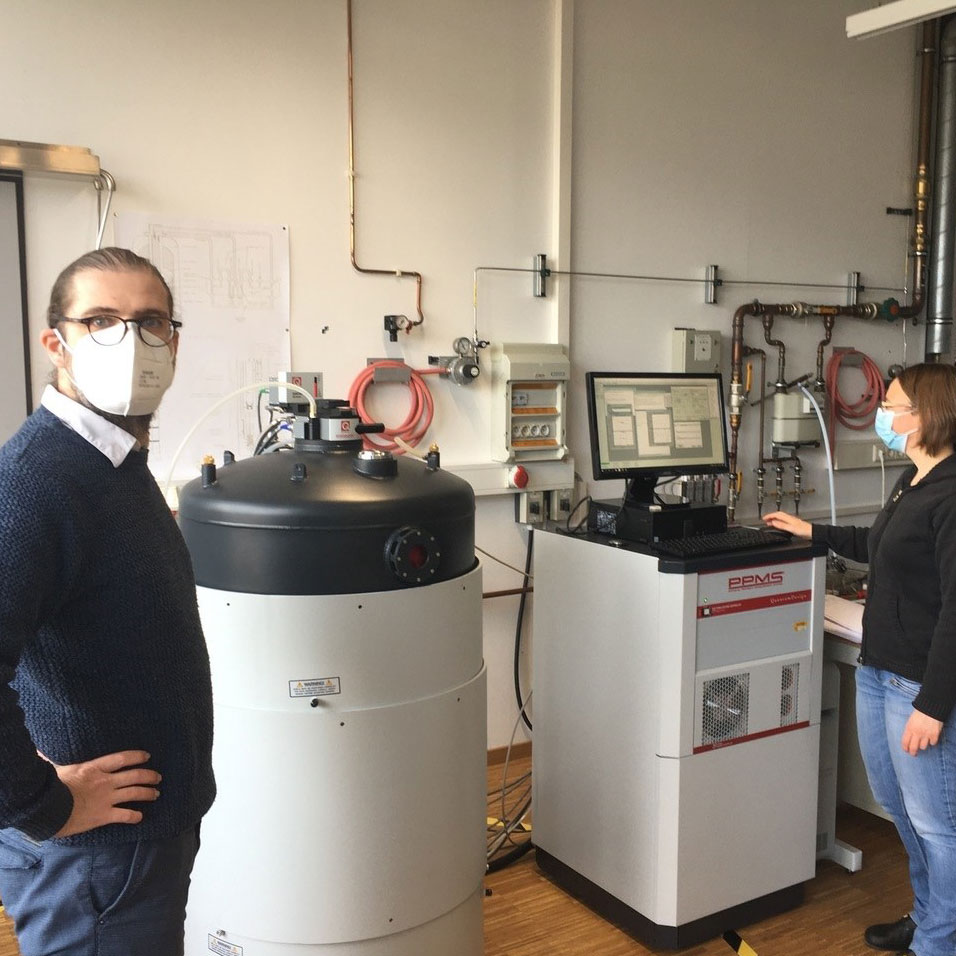Dresden features the first PPMS-16 in Germany
First PPMS-16 in Germany
Since February 2021, a brand-new PPMS-16 performs measurements at the Leibniz institute IFW in Dresden. The PPMS-16 has a powerful superconductive magnet and can generate fields up to 16Tesla. Just for comparison: the earth’s magnetic field in Central Europe is about 5x10-7 Tesla and the strongest electromagnets generate fields in the order of 3 Tesla. In contrast to the popular and common PPMS-9, only a few of the PPMS-16 have been installed worldwide, mainly in China and the USA. So we are happy that IFW has purchased the first PPMS-16 in and around Germany. The PPMS-16 at the IFW will be used for investigating, understanding, and finding possible applications for new materials showing magnetic phase transitions or magnetic interactions. It will also help analyze materials whose intrinsic properties make them react to magnetic fields in particular ways, like superconductors or the novel “quantum materials”. The performed measurements will include magnetic measurements, electrical transport, thermal transport and thermodynamic properties.
About the IFW
The Leibniz Institute for Solid State and Materials Research Dresden - IFW - is a research institute in which scientists and engineers work together. They explore the physics and chemistry of materials that might be suitable for new functionalities and devices. Many disciplines come together at the IFW: experimental physics, theoretical solid-state physics, chemistry, materials research and electrical engineering. The IFW Dresden is a legally independent, non-university research institution and member of the Leibniz Association.
About the PPMS
The Quantum Design PPMS (Physical Properties Measurement System) represents a unique concept in laboratory equipment: an open-architecture, variable temperature-field system, designed to perform a variety of automated measurements. Available measurement options include all required hardware and electronics for collecting publication-quality data. The sample can be exposed to strong magnetic fields and a temperature range from 1.9 to 400 K.


